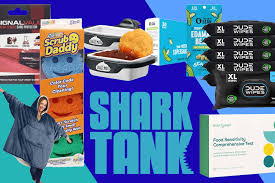Getting your food product into stores is no small feat. For small business owners in the condiment industry, it often feels like navigating a maze of challenges, from pricing strategies to trademark issues and complex retail agreements. If you’ve ever dreamed of seeing your product on store shelves, here’s what you’re really up against.
The Financial Reality: More Than Just Costs
Starting a small food brand requires more than a great product. Financially, it’s a balancing act. For every $16 bottle of sauce a customer buys, the production cost might be $4. After accounting for retailer cuts, distributor fees, shipping costs, and marketing expenses, little is left for profit. As Kiki Aranita, owner of Poi Dog products, puts it, “It’s common to lose money on each bottle sold.”
New producers must set realistic prices, factoring in hidden costs like broken shipments, press samples, and evolving market prices. For instance, increasing prices of key ingredients like chiles, spices, and packaging often leave businesses with tighter margins.
The Trademark and Cultural Ownership Debate
The battle for cultural ownership of food products can also create waves in the industry. For instance, when David Chang of Momofuku trademarked terms like “chile crunch,” it stirred a heated debate about intellectual ownership versus cultural heritage. Similar issues surfaced in Canada’s Dragons’ Den, where actor Simu Liu called out a boba tea brand for erasing its Taiwanese roots.
These controversies show the delicate balance entrepreneurs must strike between protecting their brand and respecting cultural origins. For small businesses, dealing with such challenges often adds to the already complex journey to retail success.
Getting Into Stores: A Double-Edged Sword
Retail success requires more than just a quality product—it demands resources, negotiation, and strategy. Many small producers, like Marcos Espinoza of Side Project Jerky, are hesitant to work with large retailers because of predatory practices like free fills and slotting fees. These fees force small brands to supply products for free to gain shelf space, a gamble that often drains resources without guaranteed returns.
On top of that, delayed payment terms from retailers, sometimes stretching up to 60 days, can cause cash flow issues for businesses already running on tight budgets. Palita Sriratana, founder of Pink Salt Kitchens, explains how chargebacks—a practice where retailers charge producers for unsold products—can severely impact profitability.
“The retailer will never lose,” she says. For small brands, however, these losses can be devastating.
Education and Awareness: The Path to Growth
One of the biggest challenges small businesses face is educating both consumers and retail buyers. For example, Yao Zhao of 50Hertz Tingly Foods struggles to explain the unique sensation of Sichuan pepper to buyers unfamiliar with the product. Similarly, Moji Masala founders J.D. Walsh and Shireen Qadri face the hurdle of being relegated to the “ethnic aisle,” competing with processed convenience foods that oversimplify authentic Indian flavors.
Building consumer awareness is an uphill battle when resources are limited, but it’s crucial for growth. Social media platforms like TikTok have proven helpful for some entrepreneurs, with Twrl Milk Tea’s response to cultural appropriation gaining over 131,000 views and boosting their sales by 259%.
The Pandemic Shift and the Rise of Specialty Products
The pandemic brought significant changes to the food industry. With more people cooking at home, the demand for high-quality, unique ingredients grew. This shift gave rise to specialty shops and made it easier for some small brands to gain traction. However, even with these opportunities, many entrepreneurs find themselves battling the same systemic challenges.
For Kiki Aranita, transitioning from a restaurant to selling condiments was a slow journey. Despite expanding her products to 70 Whole Foods stores and several university cafeterias, she admits, “I am not making money.”
Overcoming Distribution Challenges
Distribution models remain one of the most significant hurdles for small producers. Traditional methods often involve working with brokers, distributors, and retailers, each taking a cut. The result? Slimmer margins for the brand.
Trade shows, once an affordable way to promote products, have also become expensive, adding to the growing financial strain on small businesses. Entrepreneurs like Hyunjoo Abrecht of Sinto Gourmet note that while prices on store shelves rise, producers often see reduced profits due to increased fees and tighter margins.
Moving Forward: Tips for Aspiring Entrepreneurs
If you’re planning to launch your own food product, here are some key takeaways from industry veterans:
- Price Wisely: Assume 50% of your product’s retail price will go to the retailer and 15% to the distributor. Factor in other hidden costs to avoid financial losses.
- Educate Consumers: Use social media and marketing to raise awareness about your product’s unique value.
- Be Cautious with Retail Agreements: Understand the risks of free fills, chargebacks, and delayed payments before signing any deals.
- Focus on Slow Growth: Scaling too quickly can lead to cash flow problems. Aim for steady, manageable growth.
- Protect Your Brand: Stay informed about trademarking and cultural ownership issues to safeguard your product and values.
Final Thoughts
For small food businesses, breaking into the retail market is a challenging but rewarding journey. While shows like Shark Tank may offer quick exposure, long-term success often depends on navigating financial, cultural, and logistical obstacles. By understanding the complexities of the industry and staying resilient, entrepreneurs can carve a path to success—one jar, bottle, or package at a time.
Disclaimer – Our editorial team has thoroughly fact-checked this article to ensure its accuracy and eliminate any potential misinformation. We are dedicated to upholding the highest standards of integrity in our content.





More Stories
Breaking Down Barriers: How to Compete with Big Brands in Grocery Retail
Breaking Down Barriers: How to Compete with Big Brands in Grocery Retail
Breaking Down Barriers: How to Compete with Big Brands in Grocery Retail